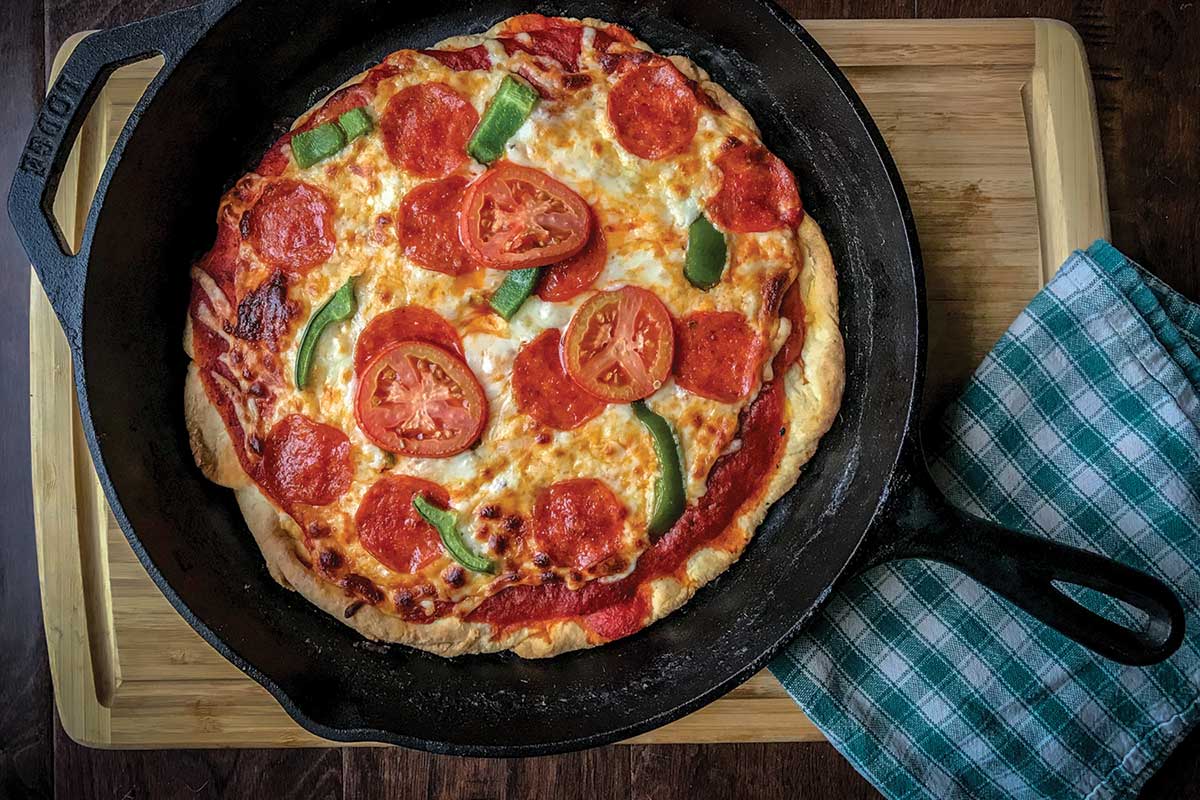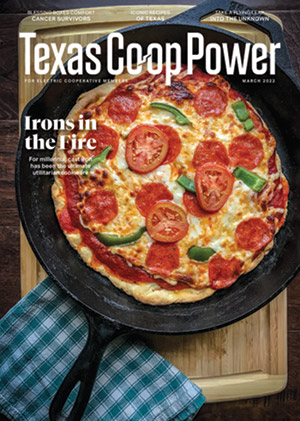From inside my home, I could smell the wood smoke wafting across the lawn. It’s a delightful blend of post oak and some fruitwood, and just the aroma makes me hungry.
With my smoker keeping a steady temperature of 350 degrees, I preheat a seasoned, 9-inch cast-iron skillet. Because it’s an all-metal piece of cookware, I don’t have to worry about plastic handles or Teflon coatings getting ruined by the heat.
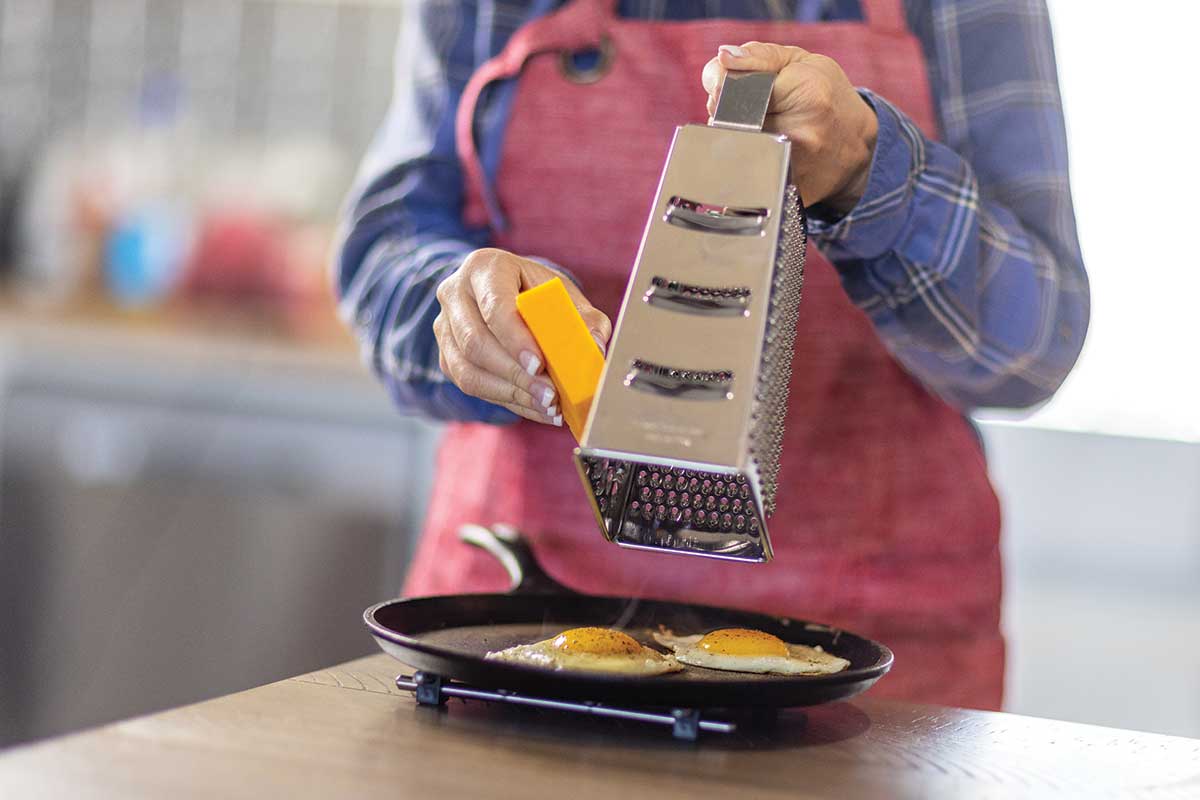
The cookware can be used on the stovetop or in the oven—paths to a perfect egg.
Russell A. Graves
Soon I’ve placed some homemade dough, tomato sauce, cheese and pepperoni in the skillet and back into the smoker. The woodsmoke-infused pizza will taste great, and the crunch provided by the cast-iron pan will give the pizza the texture I’m after.
Fifteen minutes later I have (at least in my estimation) pizza perfection, and it was made possible by a piece of cast iron handed down through my family over a couple of generations.
Cast-iron cookware is the ultimate utilitarian piece for the home chef, and while it’s been used for nearly 2,000 years in one iteration or another, the venerated cookware is making a comeback because of its versatility and durability.
Old Reliable
Cast iron is a combination of iron, steel and carbon alloys blended in a forge to make iron that’s tough and resilient enough to last decades.
Once molten, the steel is poured into a mold of compressed sand, and when cooled, the sand is shaken loose to reveal the nearly finished pan. Once the pan goes through a process to trim off the excess metal and polishing, it’s ready for seasoning and use.
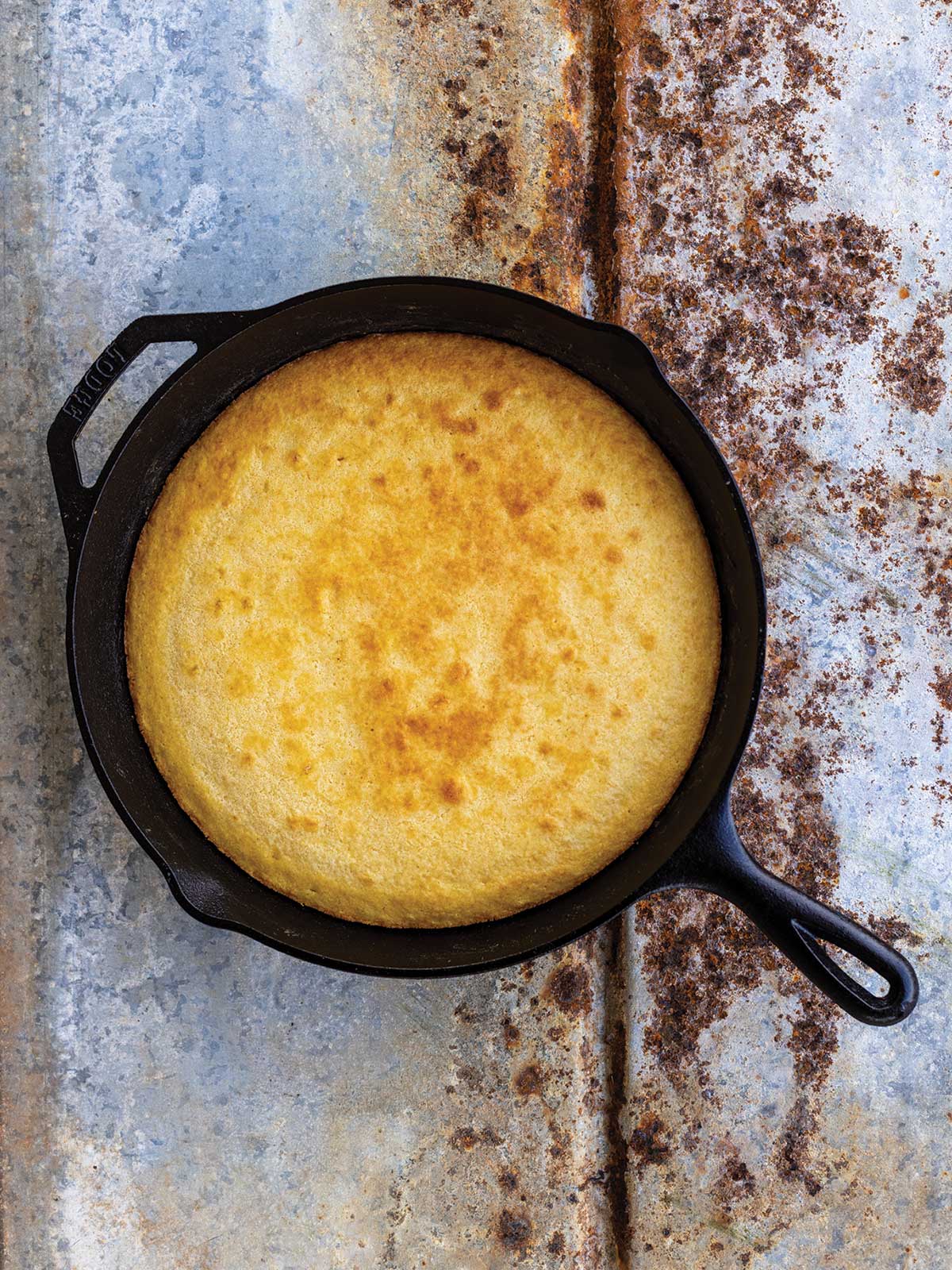
Cast iron gives cornbread a crust you can’t get in a baking dish.
Russell A. Graves
The Chinese first used cast iron for cooking nearly 2,000 years ago, and over time the iron casting process has been used to build cannons, architectural elements like bridges, and art. The technology eventually made its way to the Americas.
Colonial Americans used cast iron extensively for cooking, and as American settlers moved west, the cookware made its way across the plains and mountains on the back of chuck wagons.
“The chuck wagon cook is part of our Western heritage,” says Kent Rollins, a chuck wagon cook, educator and YouTube personality. Rollins has been a cowboy and cook all his life, so he’s got the hard-earned bona fides to have the attention of nearly 2 million subscribers. “If cast iron was good enough for ol’ Cookie to take on the trail, it’s good enough for me. We have some old cast equipment that’s close to 100 years old or older, and it still holds up. If you take care of it, it will never wear out.”
As cowboys and cattle peppered the plains in the great cattle drives of the 1880s, the need for portable food preparation was paramount. Camp cooks used Dutch ovens to prepare stocks, stews and even bread. Dutch ovens are pots with a large, flat lid that allows for the even distribution of coals across the top, so that heat comes from both the top and the bottom of the vessel. That even heating is essential for creating bread and cobblers—a staple of chuck wagon cooks everywhere. It’s the same oven that Rollins recommends to first-time cast-iron cooks.
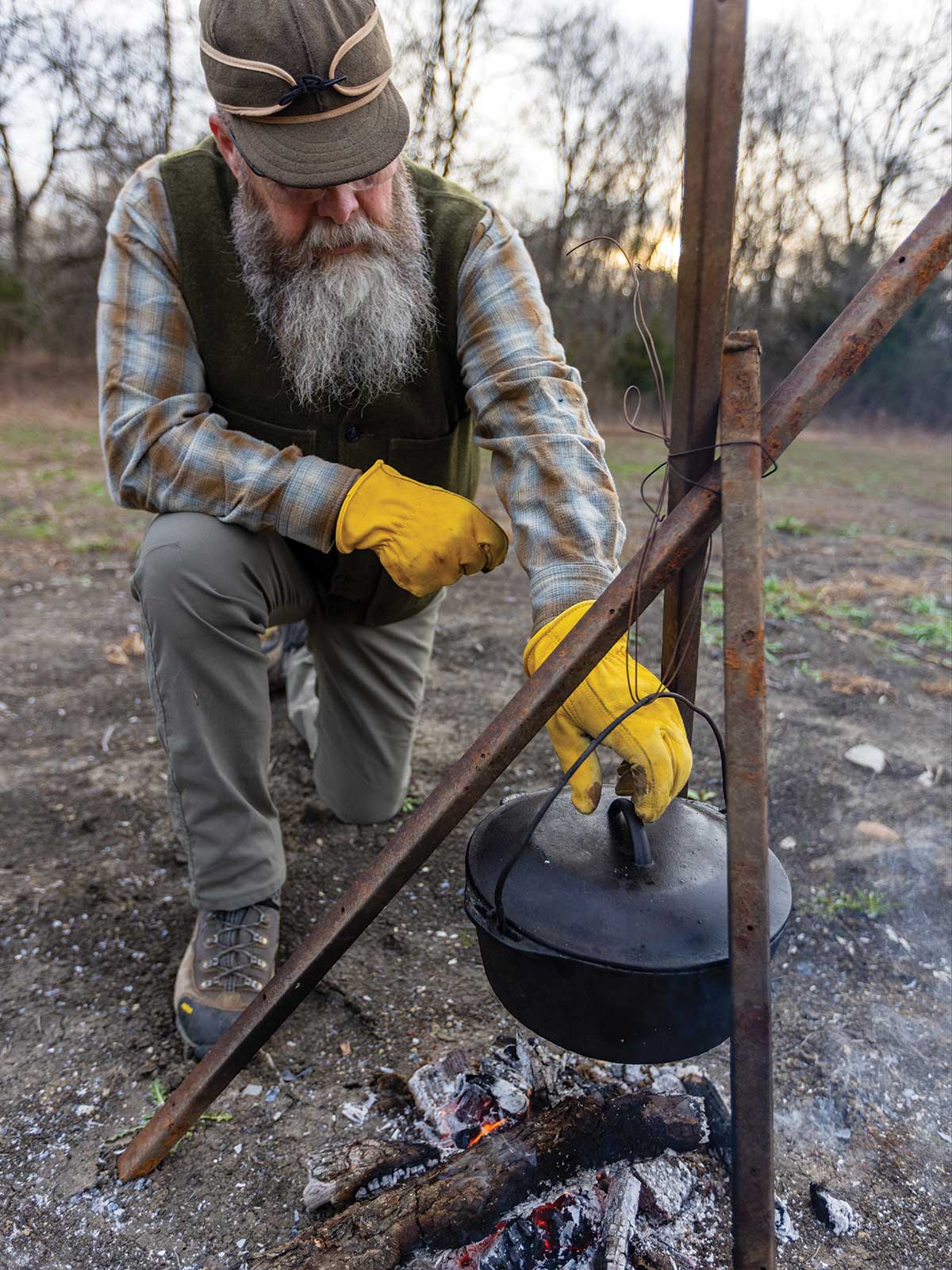
William Graves, the author’s brother, slow-cooks red beans in a cast-iron Dutch oven over a campfire.
Russell A. Graves
He says that if you have a 12-inch skillet and a 12-inch Dutch oven, you can cook just about anything. New cast-iron cooks should start with cornbread to learn to control the heat from the coals, Rollins advises. Once you’ve mastered cornbread, other dishes become simple.
The versatility of the Dutch oven makes it a valuable piece of cookware.
“You get what you pay for,” Rollins advises. “I always look for cast iron that’s made in the USA. It’s a bit higher priced than cast iron made elsewhere, but it’s a lifelong investment, and it will give you something back every time you cook out of it.”
Cooking Up a Story
The post-World War II era brought change to American kitchens. Pans made from newer and lighter materials and with nonstick coatings were appealing, pushing cast iron mostly out of favor.
But in the 21st century, cast iron has made a comeback, earning favor among professional and home chefs everywhere. Aside from its durability, cast iron heats more evenly and holds heat more efficiently than just about every other type of cookware. The simplicity of its design enhances the material’s functionality.
In years past, the 9-inch frying pan and the Dutch oven were among the most common cast-iron pieces. But because of the resurgence, many manufacturers now offer skillets of all sizes, a variety of Dutch ovens, and myriad accessories and baking pans. As such, the demand for cast-iron cookware is still a niche of the total cookware market, but it’s indeed gaining steam. Even small manufacturers like the Fredericksburg Cast Iron Co. see the potential for bringing a new pan to the marketplace.
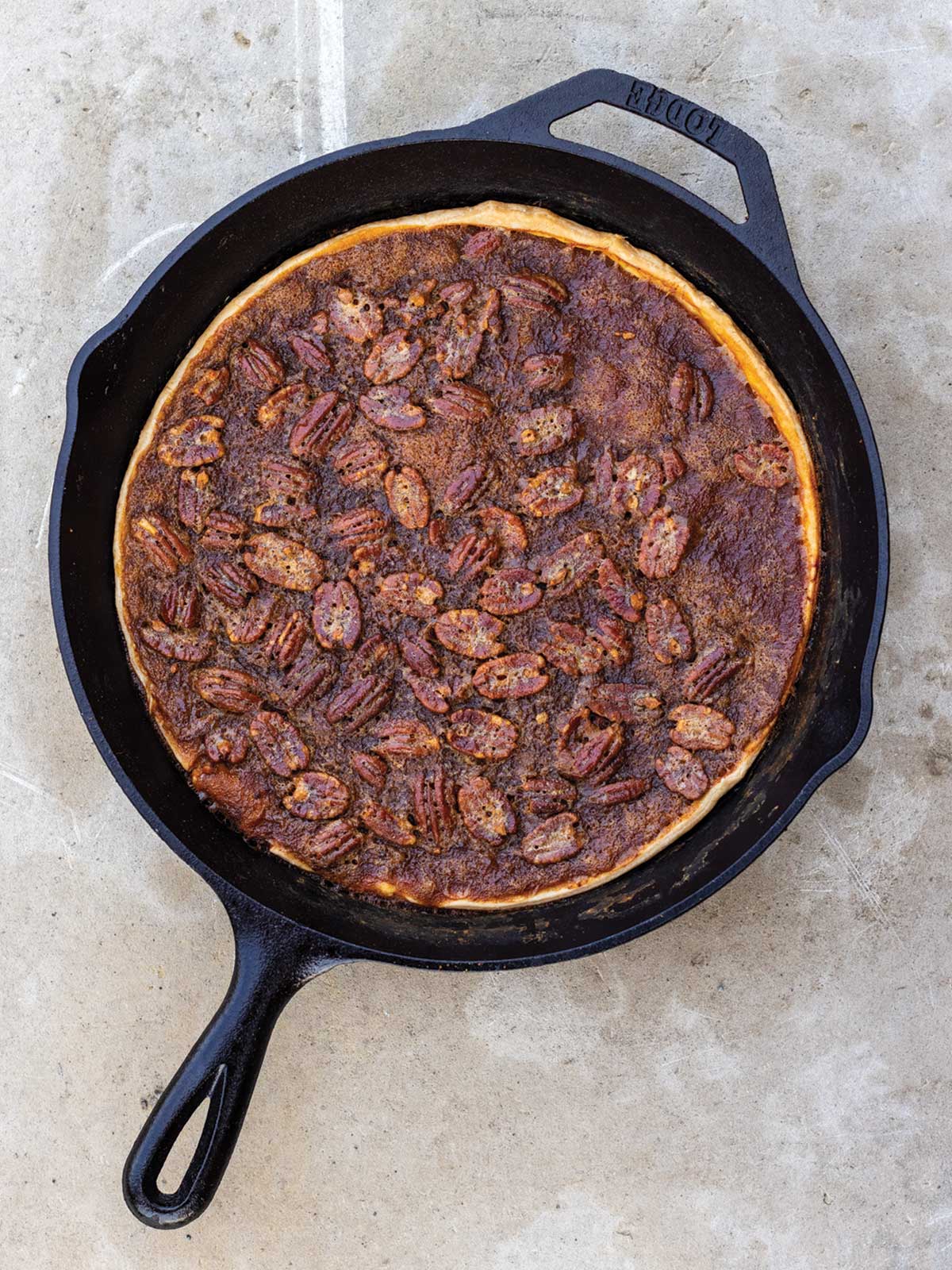
Cast iron’s even heating turns out fabulous deserts, including pecan pie, above, and cobblers.
Russell A. Graves
“We initially introduced a 10-inch skillet with a smooth, hand-seasoned nonstick cooking surface, which is created using a handcrafted method of finishing and polishing,” says Jay Mallinckrodt, founder of the boutique crafter of cast-iron skillets that was established in 2021. “This new approach resulted from the frustration of using so-called modern cookware that wore out quickly and a desire to avoid intimidating rough, coarse and sandpaperlike cast-iron surfaces that proliferate the ironware market. Our result is heavy-duty cast-iron cookware that is 100% made in Texas and can last for generations.
“Very few high-quality cooking products in the market today can be purchased for less than $200,” Mallinckrodt says. “A good cast-iron pan will not only cook your meal, but it will also bring families and friends together. That pan also becomes an heirloom piece and will last for generations.”
Wild game chef Jesse Morris, who has cooked in high-end restaurants and hotels in Dallas, swears by cast iron. He advises that any protein you cook in cast iron benefits from the controlled crisping and searing that it provides. Beyond that, he says, cast iron adds to the story of a meal.
“There is an allure of cooking with well-made pans,” Morris says. “Cooking is full of romance, and it tells a story. When you take the time to make something special and you’re using a grandparent’s old skillet or Dutch oven that has been well seasoned and made smooth from years of stirring, it helps add to that story.”
